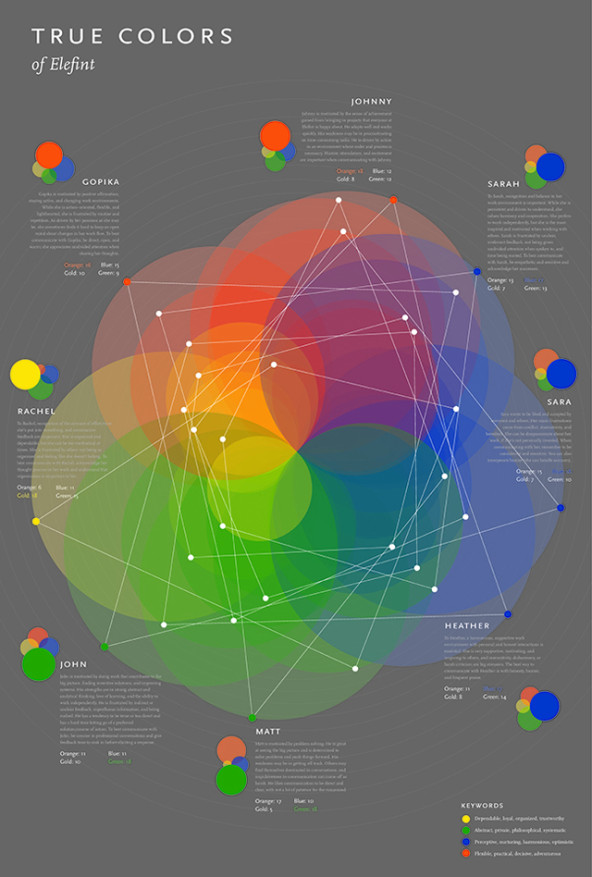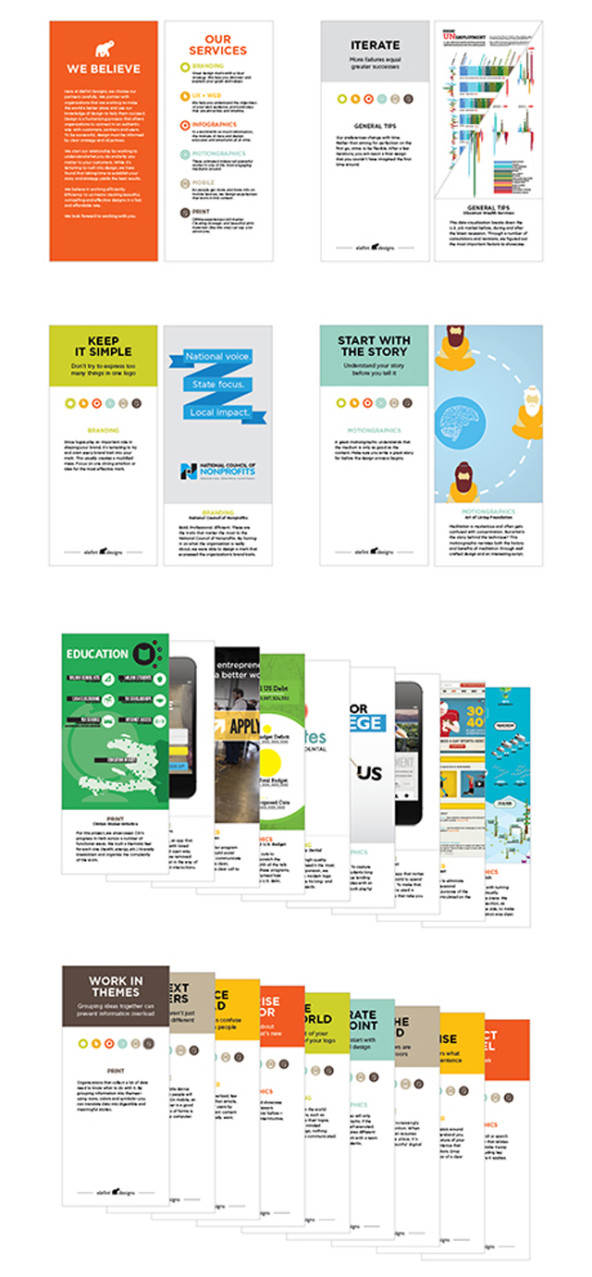Anyone who regularly attends professional conferences or tries to keep up with the overwhelming volume of relevant published work available in the digital age has experienced the challenges of retention and application. A lot has been written on the subject of “curation” in our modern world—specifically where and to whom we turn to help us find the right knowledge in the sea of information we have at our fingertips. An equally important but less discussed subject centers around how we implement, share, and expand on the right knowledge so that we are building learning organizations. Here I want to suggest a few ideas that have worked for our design studio—and specifically, how design plays a role in solving this problem.
As an avid reader of nonfiction, I thoroughly enjoy detailed and well-researched presentations of subjects that relate to my work. Great nonfiction books present an overwhelming amount of information, often arising out of years of careful research. However, despite the immense value of these works, I find that within weeks of completing a book, I can recall only a small subset of themes and anecdotes. The same is true of conferences, where I might see 20 inspiring speakers but retain only a few insights, or a company retreat, where only a fraction of the best discoveries ever find their way into my daily work habits.
I have written a fair amount on the power of design to clearly explain and widely disseminate insights that might otherwise make their way only as far as a report on an executive's desk. Brand guidelines are great for the chief marketing officer, but building those principles into the visual design of the logo, website, and collateral, as well as the voice, look, and feel of every piece of communication, creates an experience that a wide variety of internal and external constituents can access and understand. Design also has an important role to play in the retention and application of insights that can dramatically improve the effectiveness of organizations.
Using design, we can take the best of what we consume out of our faulty memories and neglected notebooks, and put it into environments where we regularly interact with it, learn from it, and build on it.
Are you enjoying this article? Read more like this, plus SSIR's full archive of content, when you subscribe.
Let me give a concrete example. A friend of mine works on improving team performance at a large tech company. One of the tools the company relies on is a simple but powerful personality test, where personal tendencies are described as a mix of four different types, or colors. People with “a lot of blue,” for example, tend to avoid conflict and look out for the feelings of others, while a predominantly “orange” person likely has lots of creative ideas but isn't perhaps the most detail-oriented.
After seeing the value in this method for a volunteer project I worked on, my co-founder and I decided to use it to improve team communication during a company retreat. The response was overwhelmingly positive; our employees were excited about the power of the tool to reframe how they think about themselves and their co-workers, and communication.
Knowing that insights like these fade quickly, we decided to create a data visualization beautiful enough for everyone to enjoy, and practical enough for everyone to use for improving understanding and communication. The result was the piece below.
 This True Colors data visualization captures the key characteristics of each of our employees personality profiles.
This True Colors data visualization captures the key characteristics of each of our employees personality profiles.
I find this data visualization spectacularly useful, because it not only helps me remember what my employees care about and how they prefer to work, but it also serves as a daily reminder of how I can use my strengths to bring out the best in my team. Even though I took the colors test twice prior to our company retreat, it wasn't until we visualized our findings that I remembered to implement the knowledge in my day to day. Recalling the tendencies and preferences of each coworker, and adjusting communication and expectations accordingly, helps produce more effective and harmonious meetings.
Our formula for sharing new insights comes in many forms. When one of our team members attends an interesting event, lecture, or conference, they often present what they experienced and learned at one of our Friday brown bag lunches. We have an internal company Tumblr account where we share funny, informative, and fascinating articles with one another. We have knowledge-sharing meetings, and often begin check-in meetings with an article or video someone found interesting or useful.
A second example of an internal knowledge retention tool is a series of flash cards that we use to recall important design principles (see below). We use these cards ourselves, and share them with clients and partners to help them develop a deeper understanding of what makes design work.
 This series of flash cards showcases important design principles and how we've applied them to our work.
This series of flash cards showcases important design principles and how we've applied them to our work.
These types of knowledge-sharing tools and methods are not uncommon. A number of organizations are beginning to understand the importance of great design for internal communication and have started producing tools that go far beyond the familiar “inspirational quote” posters that relate to their company's mission. They are using design as a tool to capture, share, retain, and build on insights and wisdom from the outside world. Too often critical knowledge for developing better organizations catches fire, disseminates rapidly, and is just as quickly forgotten. If we can capture and reflect on the most interesting and important knowledge that we absorb and generate until that knowledge works its way into our organizations’ DNA, and if we can do all this in a way that is fun, design will play an incredible role in making the world a better place.
Support SSIR’s coverage of cross-sector solutions to global challenges.
Help us further the reach of innovative ideas. Donate today.
Read more stories by Matthew Scharpnick.

